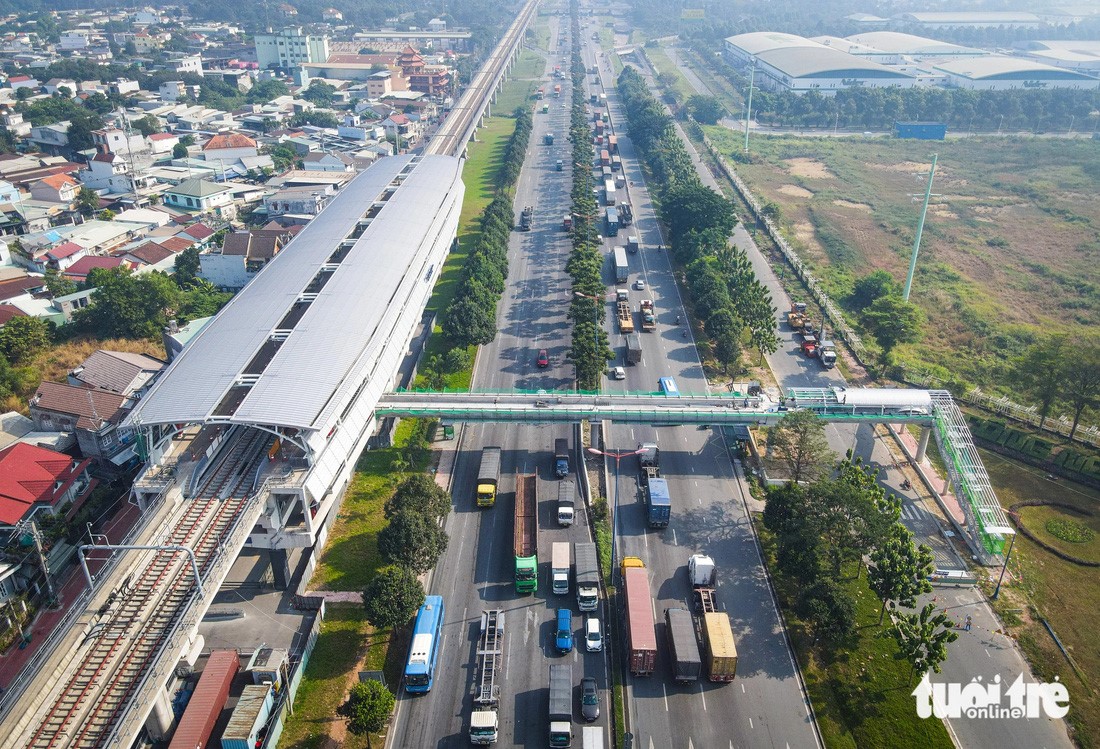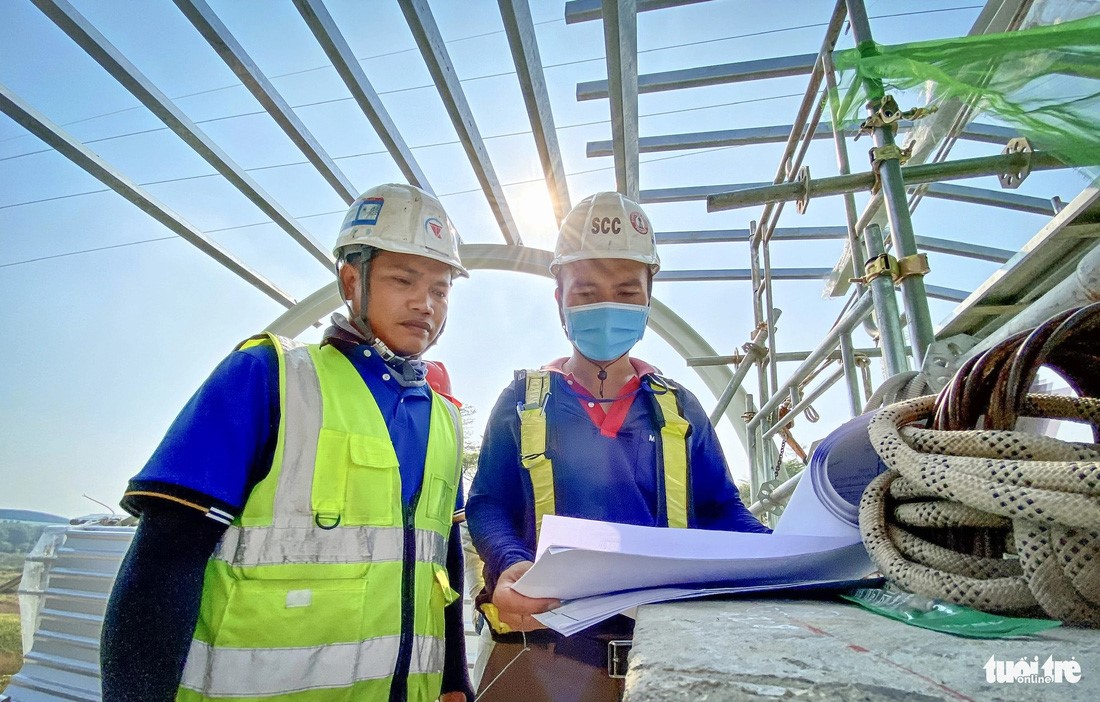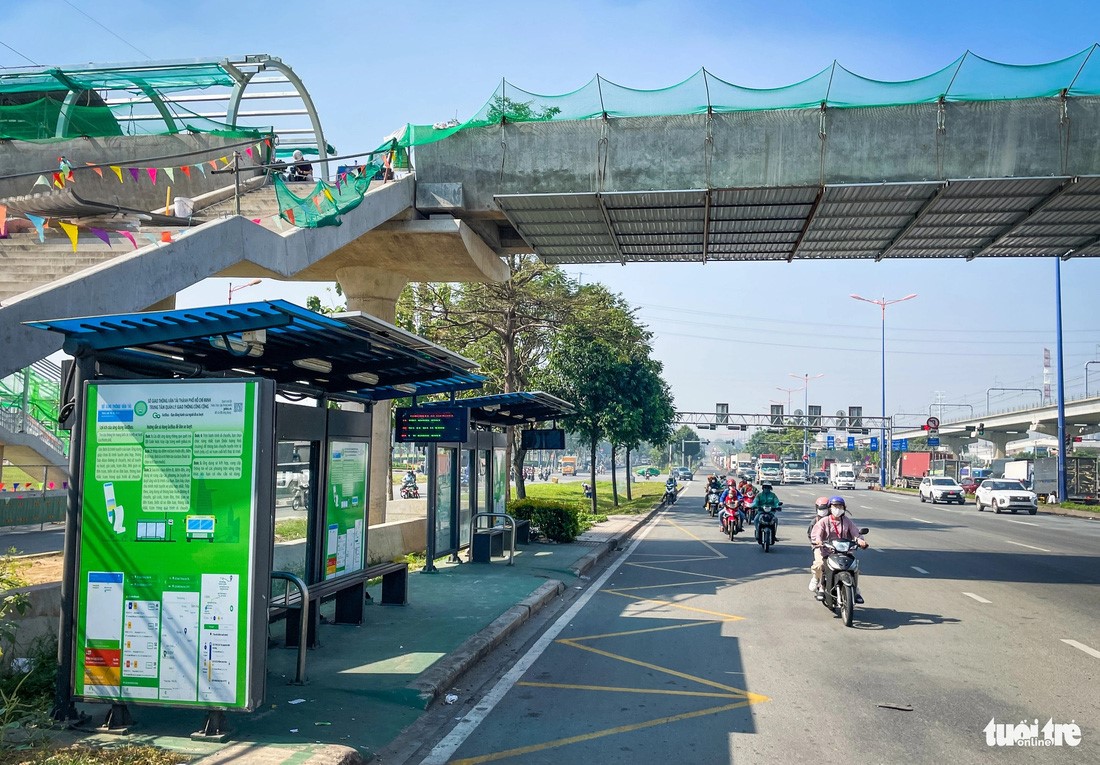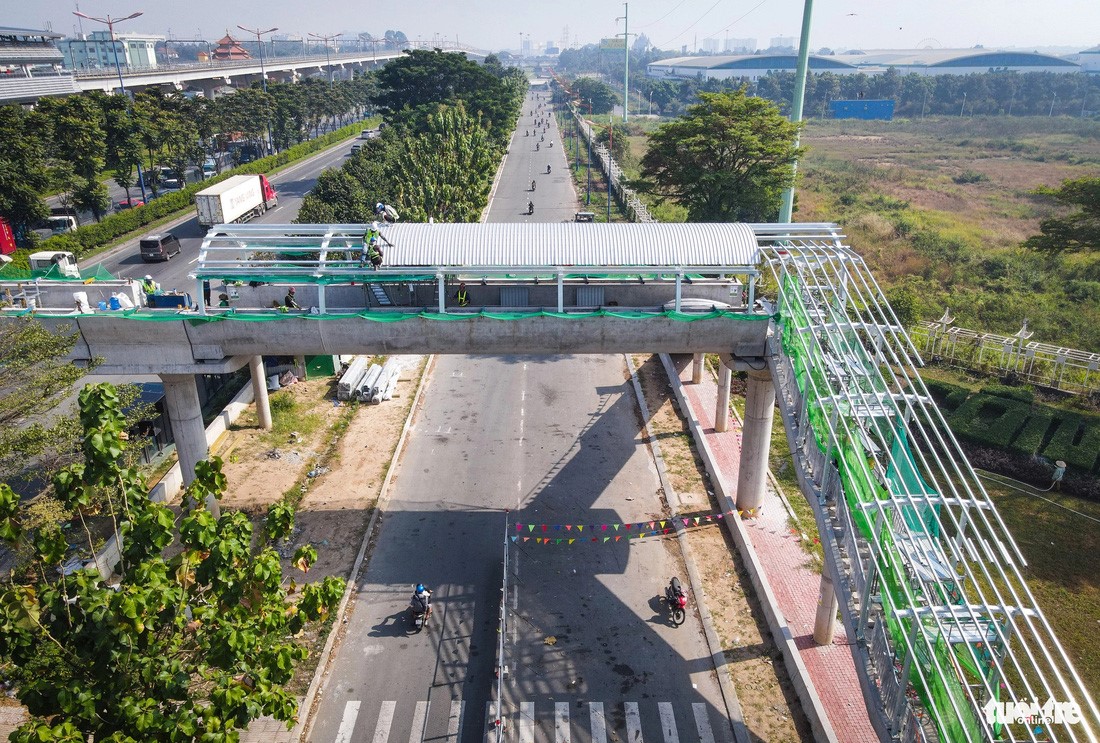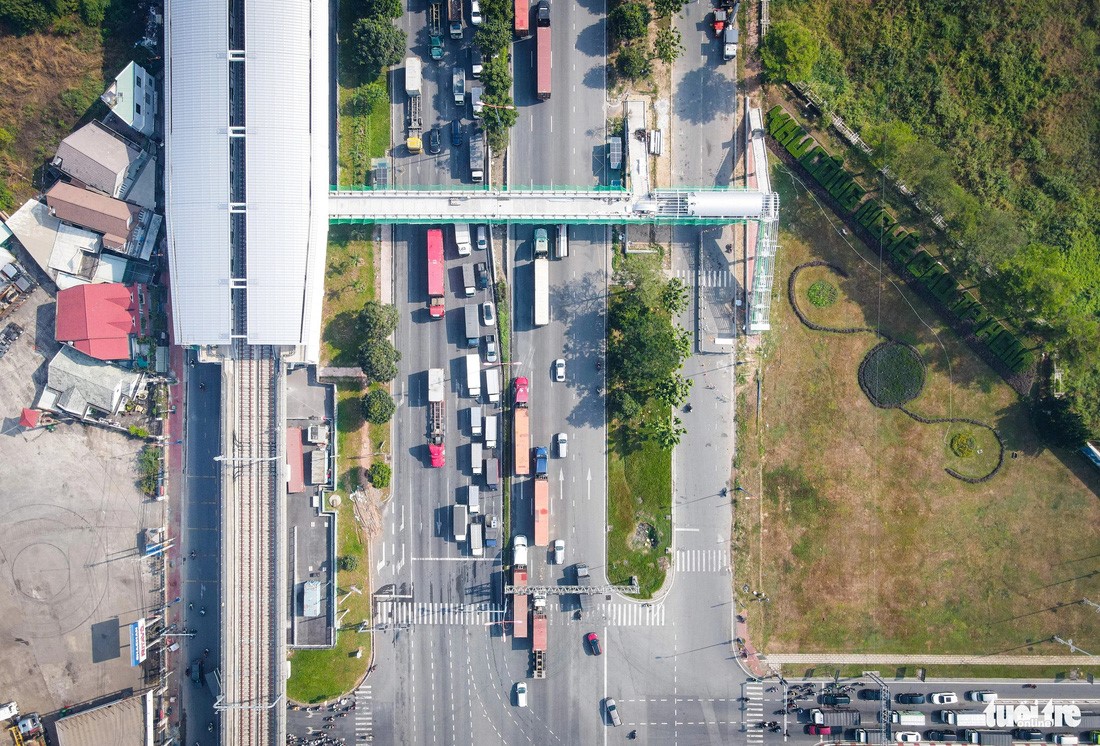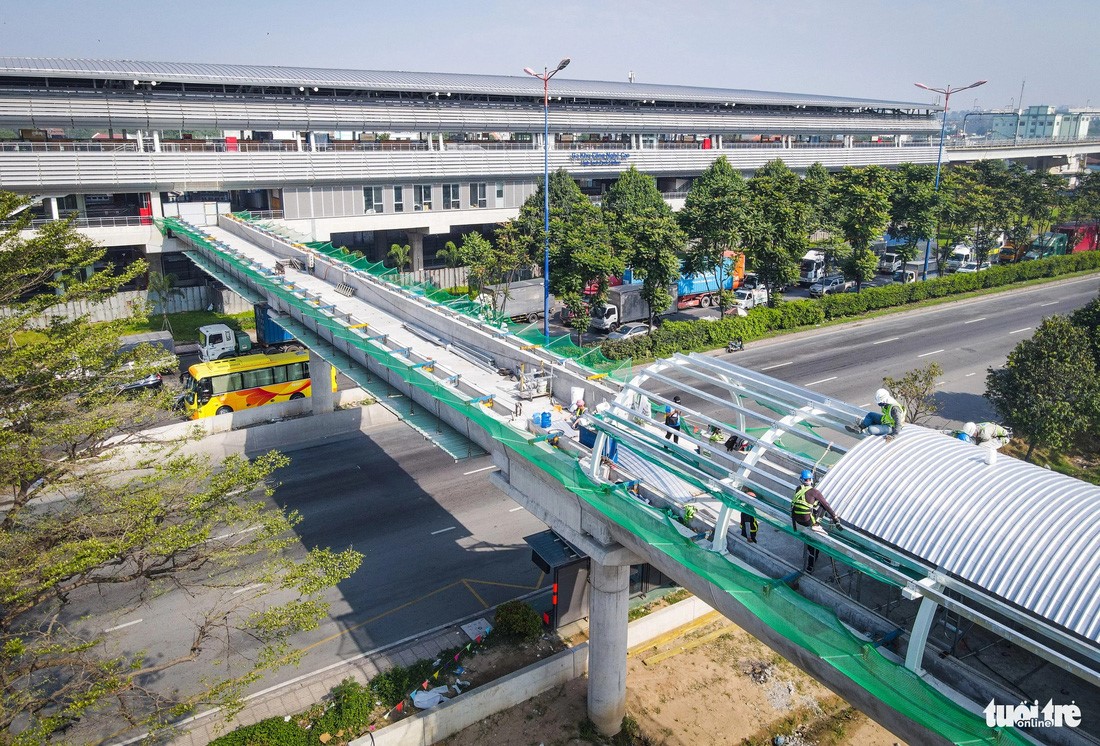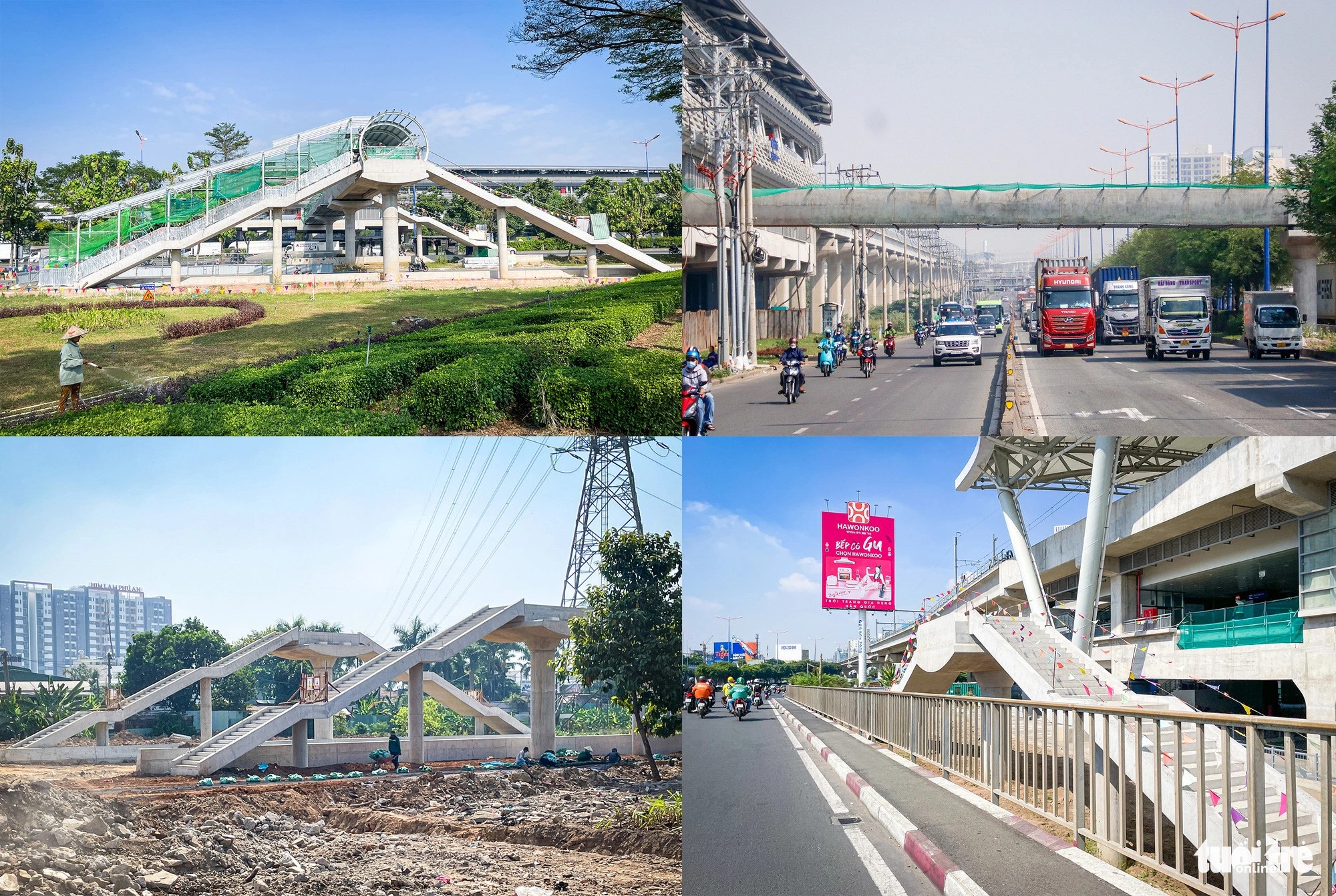Pedestrian bridges linking the elevated stations of Ho Chi Minh City's inaugural metro system are being constructed in sync with the stations and their surrounding landscapes.
This construction prioritizes both esthetic integration and the safety of passengers along the metro route.
The city’s in-progress first metro line, which runs from Ben Thanh Market in District 1 to Suoi Tien Theme Park in Thu Duc City, has three underground stations and 11 above-ground stops.
Pedestrian bridges are being constructed across Hanoi Highway and Vo Nguyen Giap Street to link nine out of the 11 elevated stations, including Tan Cang, Thao Dien, An Phu, Rach Chiec, Phuoc Long, Binh Thai, Thu Duc, Saigon Hi-Tech Park, and National Vietnam University-Ho Chi Minh City.
The footbridges are meant to help ensure safety for metro riders and will be used as escape routes at the elevated stations in case of emergencies.
|
|
| Tran Duc Anh, leader of a group of workers constructing a pedestrian bridge linking the Saigon Hi-Tech Park station, introduces the construction site of the bridge. He adds that workers are installing a roof on the bridge. Photo: Tien Quoc / Tuoi Tre |
A representative of the Ho Chi Minh City Management Authority for Urban Railways (MAUR), the investor of the metro line project, told Tuoi Tre (Youth) newspaper that it was coordinating with contractors to build seven out of the metro line’s nine pedestrian bridges, including Tan Cang, Thao Dien, An Phu, Rach Chiec, Phuoc Long, Binh Thai, and Saigon Hi-Tech Park.
So far, they have completed the installation of steel beams on a pedestrian bridge connecting the Saigon Hi-Tech Park and Binh Thai stations.
They expect to complete all of these pedestrian bridge projects by June 2024 so that the first metro line can be put into operation in July.
Meanwhile, MAUR and other relevant agencies have weighed installing elevators alongside these footbridges, connecting the walkways to bus stops and adding parking areas near the bridges.
As the pedestrian bridges are built in areas with a high traffic volume, including many container trucks, their vertical clearances are at least 4.75 meters, according to MAUR.
Ho Chi Minh City’s first metro line, which is currently 97 percent complete, will be put into commercial operation in July 2024, according to MAUR.
Work on the 19.7-kilometer-long metro line started in 2012 at a total cost of VND43.7 trillion (US$1.8 billion).
|
|
| Two bus stops below a pedestrian bridge. Photo: Tien Quoc / Tuoi Tre |
|
|
| The pedestrian bridges linking the elevated stations of Ho Chi Minh City's first metro line are being constructed to complement the design of the stations and blend seamlessly with the surrounding landscapes. Photo: Chau Tuan / Tuoi Tre |
|
|
| The Ho Chi Minh City Management Authority for Urban Railways (MAUR), the investor of the metro line project, is developing seven out of the nine pedestrian bridges. Photo: Chau Tuan / Tuoi Tre |
|
|
| As for the remaining pedestrian bridges, MAUR is cooperating with relevant agencies to relocate technical infrastructure and complete procedures to start work on the footbridges early this year. Photo: Chau Tuan / Tuoi Tre |
|
|
| Pedestrian bridges linking the Saigon Hi-Tech Park and Binh Thai stations (upper row, from left), and Phuoc Long and Tan Cang Stations (lower row, from left). Photo: Tien Quoc / Tuoi Tre |
Like us on Facebook or follow us on Twitter to get the latest news about Vietnam!



